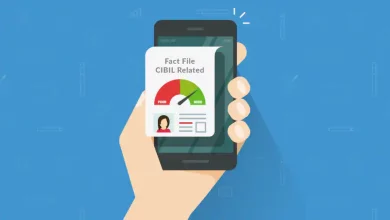Quality on a Budget: The Essential Guide to Smart Shopping

Key Takeaways:
- Smart shopping involves more than just finding discounts; it encompasses strategic planning and quality considerations.
- Maximizing savings effectively requires leveraging promo codes and making informed budgeting decisions.
- Long-term investment savings and personal enjoyment can result from balancing quality and cost.
Understanding the Psychology of Smart Shopping
Have you ever experienced the exhilaration of snagging a fantastic deal? It’s more than just about saving money; it taps into our instinctual craving for victory and competence. Smart shopping has a psychological aspect; it’s about the satisfaction of being a discerning consumer, cleverly navigating the system to maximize value. Successful deal hunting requires strategic planning, patience, and the ability to discern genuine value. It’s not merely about the instant gratification of a spontaneous bargain but about making informed decisions that contribute to a sound financial lifestyle. While hunting for discounts and sales can be financially advantageous, yielding to the allure of a discount without considering the actual necessity or worth of the item can lead to a false economy. Practice discernment and shrewdness to become truly proficient at intelligent shopping.
The Importance of Budgeting for Savings Success
Sure, sale signs are tempting, but savings come from a solid budget! A well-crafted budget, based on your income and expenses, helps you control your spending and avoid impulse buys. Think of it as your shopping superpower! Budgeting apps can help you track spending, set alerts, and monitor progress towards your savings goals. Plus, with a clear budget, you can strategically use promo codes and other deals to stretch your dollars further. You can snag the best value without derailing your financial plans. Such resources empower consumers with data to make informed decisions. The Internet is a treasure trove of insightful content on establishing and adhering to a budget; for instance, Forbes Advisor offers a comprehensive guide to setting up a budget that can adapt to your financial journey. A formidable budget can serve as a springboard for adventurous yet calculated shopping expressions, ensuring each purchase aligns with your more significant financial objectives.
Leveraging Coupons and Discounts Effectively
Coupons and discounts are potent tools for savvy shoppers, providing a straightforward way to stretch your dollar further. To make the most of these deals, it’s essential to know where to find them, whether they’re tucked inside a newspaper, displayed on a store’s website, or aggregated on a deals platform. Amidst the thrill of chasing deals, it’s imperative to be methodical—organize your coupons and discounts to align with your purchasing patterns and be vigilant about expiration dates and exclusions. A thoughtful approach to couponing—considering the utility and necessity of the purchase—ensures that the benefits are genuine. The lure of a steep discount should never override whether the product or service is truly needed. Remember, the goal is to save money, not buy more gratuitously tactfully.
The Art of Price Comparison and Negotiation
The digital age has bestowed consumers with a bevy of tools for price comparison, offering a panoptic view of the marketplace and ensuring the best deals are a click away. However, savvy shoppers don’t just compare; they also seize the opportunity to negotiate. Skillful negotiation can lead to unexpected savings, even in mainstream retail environments known for fixed pricing. Furthermore, integrating knowledge of sale seasons and promotional periods into your buying strategy can reduce expenses dynamically. Paying attention to the timing of purchases, such as waiting for post-holiday markdowns or end-of-season clearances, allows for strategic planning and potentially significant cost savings.
When to Choose Quality Over Price
In the quest for savings, paying attention to the importance of quality is crucial. Investing more upfront in a well-crafted product can translate to lower costs over time due to longevity and performance. High-quality items—kitchen appliances, electronic gadgets, or footwear—often feature superior materials, excellence in design, and enduring appeal. While premium products might carry a higher initial price tag, their resilience, and efficiency can lead to savings that eclipse the allure of cheaper, less durable alternatives. Additionally, choosing quality can offer immeasurable satisfaction, knowing you’ve selected goods that stand the test of time and use.
Exploring Second-Hand and Refurbished Markets
In recent years, the second-hand market has gained considerable momentum, drawing savvy consumers in search of premium goods without the weighty price tags. Pioneering the movement towards sustainable consumption, these markets challenge the stigma traditionally associated with pre-owned merchandise. Whether you seek vintage fashion, refurbished electronics, or lightly used furniture, opportunities abound for those willing to explore the world of thrift. The key is approaching these markets discerningly, focusing on condition, authenticity, and value. Accepting the second-hand market helps you save money, promote a more sustainable buying philosophy, and contribute to a circular economy.
Online Shopping Strategies for the Best Deals
The expansion of online retail has revolutionized the shopping experience, offering unparalleled convenience and a breadth of options. However, it has also introduced its own set of challenges. To navigate the online marketplace effectively:
- Adopt comprehensive strategies to secure the best deals while safeguarding personal information and finances.
- Deploy browser extensions designed to track price histories, apply discounts automatically, and alert you to flash sales.
- Educate yourself on protecting against fraud and maintaining security with reliable guidelines, such as those provided by the Federal Trade Commission’s Online Shopping Tips.
By coupling strategic know-how with online safety practices, you can reap the benefits of e-commerce without falling prey to its pitfalls.
Maximizing Rewards Points, Cashback, and Loyalty Programs
Loyalty programs, cashback offers, and rewards points are enticing incentives that, when used judiciously, can amplify savings significantly. These programs are designed to foster consumer loyalty, with rewards ranging from discounts to perks such as free shipping or exclusive access to sales. To unlock their full potential:
- Be selective and strategic with the programs you partake in, aligning them with your preferences and spending habits.
- Engage with platforms that facilitate the tracking and optimal utilization of your rewards.
- Simultaneously, be mindful of such programs’ traps; accumulating points should never be the sole motivator for a purchase.
- Ensure that reward-driven shopping does not derail your budget or lead to excessive, unnecessary spending.
The Impact of Mindful Shopping on Personal Finance
Mindful shopping transcends the concept of mere frugality. It’s a comprehensive approach to purchases, integrating awareness of personal values, financial goals, and the broader socio-economic impact of consumption. Conscious shopping means assessing not just the price but the practicality, provenance, and production ethics of products. Consumers forge toward improved economic security and personal growth by adopting a mindful shopping philosophy. This ethos encourages a transformative relationship with material possessions that values quality, utility, and meaning over quantity or fleeting trends.
Innovations in the Retail Space and Their Savings Potential
The retail sector is a hotbed of innovation, continuously transforming with advances that simplify shopping while adding layers of customization. Artificial intelligence elevates the personal shopping experience, accurately predicting consumer preferences and facilitating tailored recommendations, often at competitive prices. Emerging business models like subscription services streamline the acquisition of goods, usually offering discounts for commitment. It’s essential to stay abreast of these developments; each can alter buying behaviors and unlock new avenues for cost-effective consumption. As technology refines the shopping landscape, consumers with knowledge and adaptability benefit the most financially.





